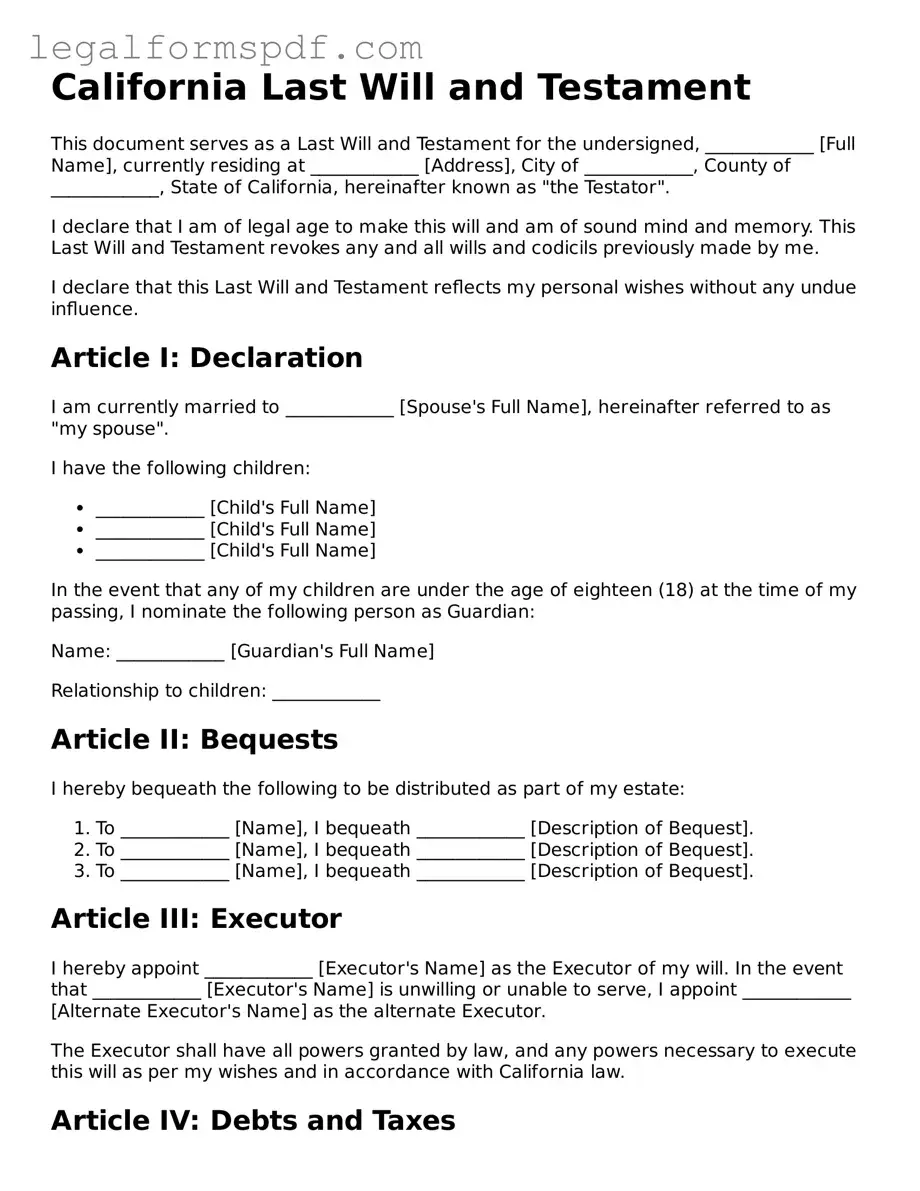California Last Will and Testament
This document serves as a Last Will and Testament for the undersigned, ____________ [Full Name], currently residing at ____________ [Address], City of ____________, County of ____________, State of California, hereinafter known as "the Testator".
I declare that I am of legal age to make this will and am of sound mind and memory. This Last Will and Testament revokes any and all wills and codicils previously made by me.
I declare that this Last Will and Testament reflects my personal wishes without any undue influence.
Article I: Declaration
I am currently married to ____________ [Spouse's Full Name], hereinafter referred to as "my spouse".
I have the following children:
- ____________ [Child's Full Name]
- ____________ [Child's Full Name]
- ____________ [Child's Full Name]
In the event that any of my children are under the age of eighteen (18) at the time of my passing, I nominate the following person as Guardian:
Name: ____________ [Guardian's Full Name]
Relationship to children: ____________
Article II: Bequests
I hereby bequeath the following to be distributed as part of my estate:
- To ____________ [Name], I bequeath ____________ [Description of Bequest].
- To ____________ [Name], I bequeath ____________ [Description of Bequest].
- To ____________ [Name], I bequeath ____________ [Description of Bequest].
Article III: Executor
I hereby appoint ____________ [Executor's Name] as the Executor of my will. In the event that ____________ [Executor's Name] is unwilling or unable to serve, I appoint ____________ [Alternate Executor's Name] as the alternate Executor.
The Executor shall have all powers granted by law, and any powers necessary to execute this will as per my wishes and in accordance with California law.
Article IV: Debts and Taxes
I direct that all my just debts, funeral expenses, and expenses of last illness be paid as soon as practicable after my passing.
It is my intention that any taxes or duties payable in respect of any property or money passing under this will shall be paid out of my estate and not by the respective beneficiaries.
Article V: General Provisions
All references in this will to the "estate", "my estate", or "the estate" shall include any real, personal, or mixed property that I may own at the time of my passing.
This Last Will and Testament is made in accordance with the laws of the State of California and shall be interpreted accordingly. Any part of this will found to be invalid will not affect the remaining parts.
IN WITNESS WHEREOF, I, ____________ [Full Name], the Testator, have to this will, set my hand this ____ day of ____________, 20__.
Testator's Signature: ___________________________
Date: _______________
Witness #1
Name: ___________________________
Signature: _______________________
Date: _______________
Witness #2
Name: ___________________________
Signature: _______________________
Date: _______________
